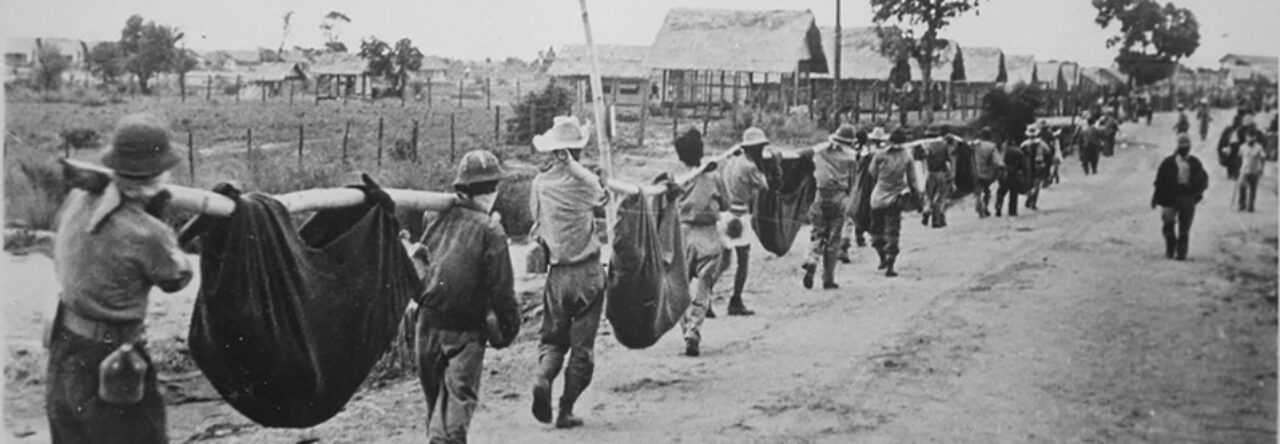⚔️ The Bataan Campaign: One of WWII’s Most Heroic and Tragic Battles
The Bataan Campaign stands as one of the most defining chapters of World War II in the Pacific. It is a story of courage, sacrifice, suffering, and unbreakable endurance. The defenders of Bataan—Filipino and American soldiers—fought against overwhelming odds, facing hunger, disease, lack of supplies, and a powerful enemy. Their bravery has echoed across generations, forming one of the strongest symbols of resistance and allied unity during the war.
🛡️ The Strategic Context Behind the Campaign
When World War II erupted in the Asia-Pacific region after the attack on Pearl Harbor, the Philippines became one of Japan’s major targets. The archipelago was of great strategic value due to its location and military importance. The United States and the Philippines, bound by decades of cooperation, prepared to defend the islands against invasion.
General Douglas MacArthur’s War Plan Orange-3 (WPO-3) strategy involved withdrawing troops to the Bataan Peninsula and Corregidor Island to slow down the Japanese advance. This plan relied heavily on reinforcements that, tragically, would never arrive due to the rapid expansion of the war.
🌴 Retreat to Bataan — The Beginning of a Brutal Ordeal
From December 1941 to early January 1942, Filipino and American soldiers fought fiercely across Luzon. Despite their efforts, the Japanese forces overran the majority of the island. Troops retreated to Bataan, where they prepared for months of defensive warfare. The peninsula’s geography—dense forests, mountains, and narrow roads—was ideal for slowing the enemy, but the defenders lacked supplies.
🍚 Hunger, Disease, and the Harsh Reality of War
As the weeks passed, food dwindled. Soldiers survived on half or even quarter rations. Rice was mixed with sawdust to stretch supplies. Malaria, dysentery, dengue fever, and exhaustion spread through the camps. Medical supplies ran out, and hospitals overflowed with the sick and wounded.
Yet, despite their weakening bodies, the defenders held the line.
💥 Major Battles: Holding the Line Against the Odds
The Bataan Campaign is remembered for its intense battles:
• 🔥 The Battle of Abucay Line – A critical early stand, where the defenders held off Japanese assaults for weeks.
• 🌊 Battle of the Points – One of the most chaotic parts of the campaign, as Japanese forces landed behind defensive lines, forcing close-quarters combat.
• 🏞️ The Orion-Bagac Line Defense – The final major stand before the inevitable collapse.
Every inch of ground was fought for with desperation and staggering bravery.
😔 The Fall of Bataan — April 9, 1942
By April, the defenders were exhausted beyond measure. They had no more ammunition, medicine, or food. General Edward King made the painful decision to surrender, hoping to save the lives of his men. His decision led to one of the darkest events in wartime history: the Bataan Death March.
💀 The Bataan Death March — A Human Tragedy
Over 75,000 Filipino and American soldiers were forced to march over 100 kilometers under brutal conditions. They endured:
• ☀️ Extreme heat
• ❌ No food or water
• 👊 Beatings
• 💣 Random executions
• 🥵 Disease and dehydration
Thousands died during the march, and countless more suffered in prison camps.
🕊️ Legacy of Courage and Sacrifice
Despite the tragedy, the defenders of Bataan became symbols of resilience. Their delay of the Japanese advance allowed Allied forces time to regroup. Their bravery inspired generations and strengthened ties between the Philippines and the United States.

